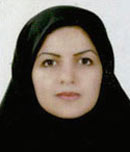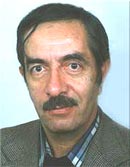Contents: 2024 | 2023 | 2022 | 2021 | 2020 | 2019 | 2018 | 2017 | 2016 | 2015 | 2014 | 2013 | 2012 | 2011 | 2010 | 2009 | 2008 | 2007 | 2006 | 2005 | 2004 | 2003 | 2002 | 2001
2010, 7
Effect of sound source directionality and surface diffusivity on sound diffusion
language: English
received 10.09.2008, published 29.03.2010
Download article (PDF, 360 kb, ZIP), use browser command "Save Target As..."
To read this document you need Adobe Acrobat © Reader software, which is simple to use and available at no cost. Use version 4.0 or higher. You can download software from Adobe site (http://www.adobe.com/).
ABSTRACT
Sound diffusion is a well known and desired subject in room acoustics; however it is hardly achievable especially in small rooms and low frequencies. Going toward that goal has been the subject of many researches. This paper try to investigate sound source directionality effects on room frequency response, by considering source directivity and surface diffusivity in a model based on Boundary Element Method. Evaluations of the predictions from the room acoustic modeling program have been run using two source types with the same sound power: (a) an omni-directional source; (b) a realistically-directional source with different directionalities together with different combination of diffusive surfaces on room’s walls. Analyses have been run for three source/receiver combinations in two rooms on relative sound pressure level (SPL) at low frequencies. Diffusive surfaces are implemented on different rooms’ walls and applied to the model. The results also confirm the relation of sound diffusion to surface diffusivity and show what combinations of surface diffusivity and source directivity could lead to a more smooth frequency response.
Keywords: room acoustics, source directivity, sound diffusion, diffusive surface, boundary element method.
14 pages, 6 figures
Сitation: Masoumeh Shafieian, Farokh Hodjat Kashani. Effect of sound source directionality and surface diffusivity on sound diffusion. Electronic Journal “Technical Acoustics”, http://www.ejta.org, 2010, 7.
REFERENCES
1. Kuttruff H. Room Acoustics, fourth edition, ISBN 0-419-24580-4, Spon Press, 2000.
2. Cox T. J., D’Antonio P. Acoustic Absorbers and Diffusers, Theory, design and application, ISBN 0-415-29649-8, Spon Press, 2004.
3. M. Long. Architectural Acoustics, ISBN 13: 978-0-12-455551-8, Elsevier Academic Press, 2006.
4. Dalenback B. I., Kleiner M, Svensson P. Audibility of changes in geometric shape, source directivity, and absorptive treatment — experiments in auralization. J Audio Eng Soc 1993, 41(11), 905–13.
5. Prince D., Talaske R., Variation of room acoustic measurements as a function of source location and directivity. Wallace Clement Sabine centennial symposium, 1994, p. 211–14.
6. Otondo F., Rindel J. H., The influence of the directivity of musical instruments in a room. Acta Acust Unit Acust, 2004, 90(6), 1178–84.
7. Burton A. J. The solution of Helmholtz equation in exterior domain using integral equations, NPL Report NAC30, 1973.
8. Schenck H. A. Improved integral formulation for acoustic radiation problems, J. Acous. Soc. Am. 44, pp. 41–58, 1968.
9. Lam Y. W. Issues of computer modeling of room acoustics in non-concert hall settings. J. Acoust. Sci. & Tech. 26, 2, 2005.
10. Skudrzyk E. The Foundations of Acoustics, Basic Mathematics and Basic Acoustics. ISBN 3-211-80988-0, Springer-Verlag, Wien, 1971.
11. Wang L. M., Vigeant M. C. Evaluations of output from room acoustic computer modeling and auralization due to different sound source directionalities. Applied Acoustics, December 2008, volume 69, issue 12, pp. 1281–93.
 |
Masoumeh Shafieian born in 1977, received the B.S. and M.S. degrees in Electrical Engineering from Iran University of Science and Technology, Tehran (IUST). She is currently working toward Ph.D. in this university. Her research interests are sound wave propagation, architectural acoustics, numerical methods in acoustics, etc. She is lecturer in acoustics and electrical engineering at Islamic Republic of Iran Broadcasting University (IRIBU) and Azad University. She has been working for Data Communication Company of Iran (DCI) and Iran Telecommunications Research Center (ITRC). e-mail: shafieian(at)iust.ac.ir |
|
 |
Farokh Hodjat Kashani born in 1941, received the M.S. and Ph.D. degrees in Electrical Engineering from the University of California, Los Angles (UCLA), and the B.S. degree, with high distinctions, in Electrical Engineering from the University of Tehran, Iran. He is the past Chairman and a Professor of Electrical Engineering department at Iran University of Science and Technology, Tehran (IUST). Dr. Hodjat Kashani has authored and co-authored over 100 technical journal articles and conference papers and has written numerous book chapters in English and Persian. His research contributions cover diverse areas of electromagnetics, antennas, microwave (passive and active), radar systems, microwave tubes, numerical and optimization techniques, sound wave propagation, etc. For his contributions, Dr. Hodjat Kashani has received numerous awards, including the Iranian Everlasting Persons Award, 2002 Iran’s Distinguished Professor Award. He has also been a consultant to many telecommunications companies and Islamic Republic of Iran Broadcasting (IRIB) organization. e-mail: kashani(at)iust.ac.ir |
|
